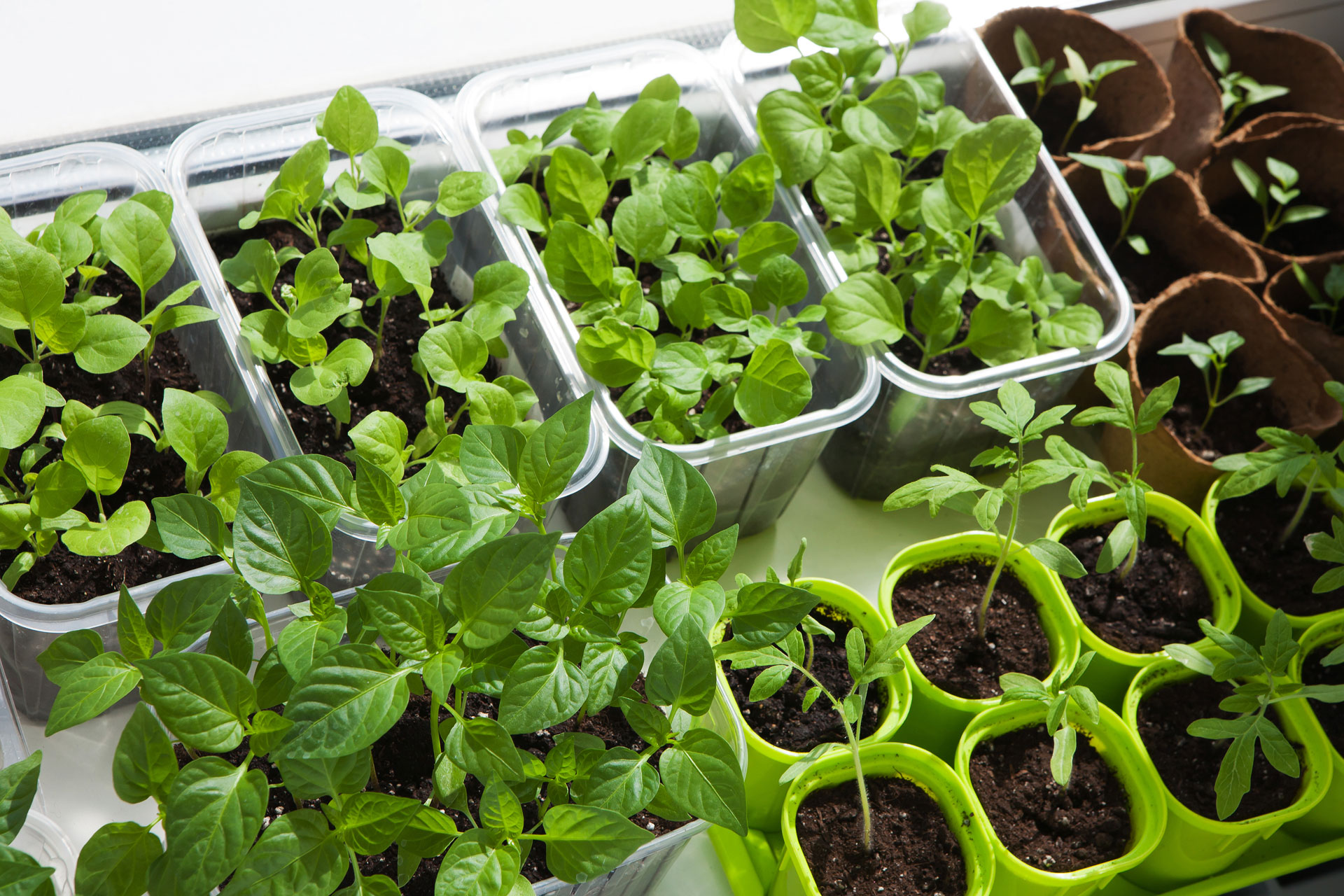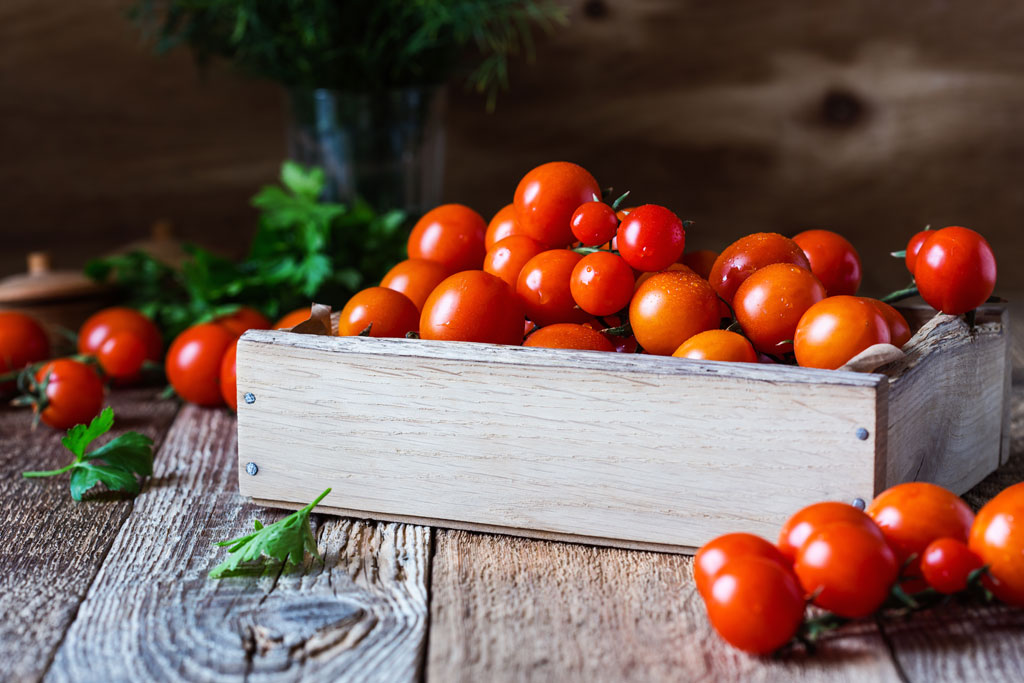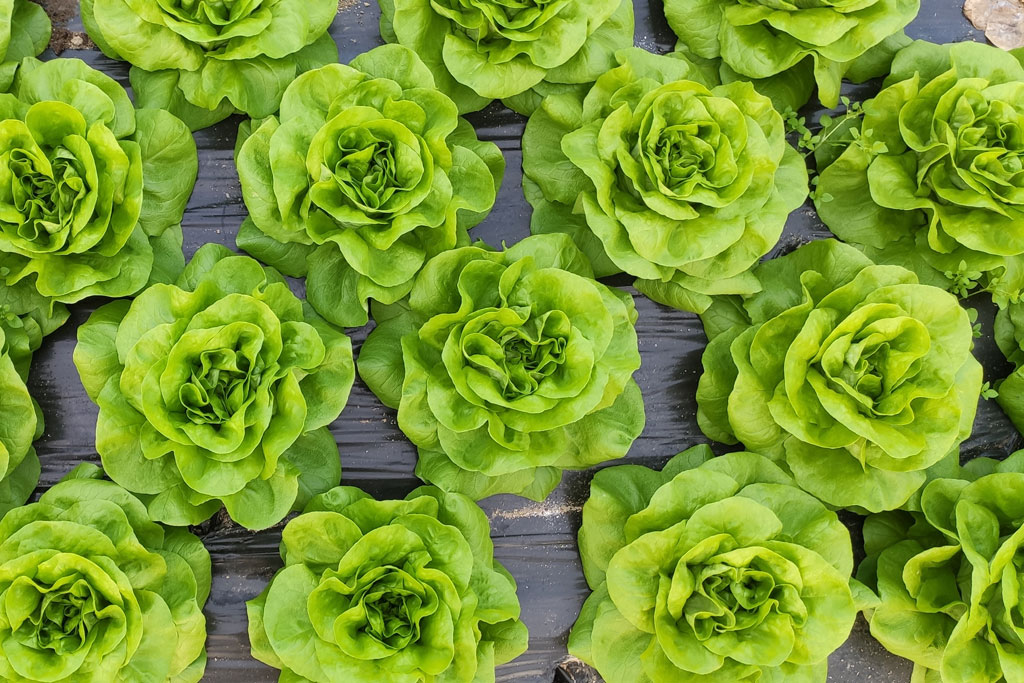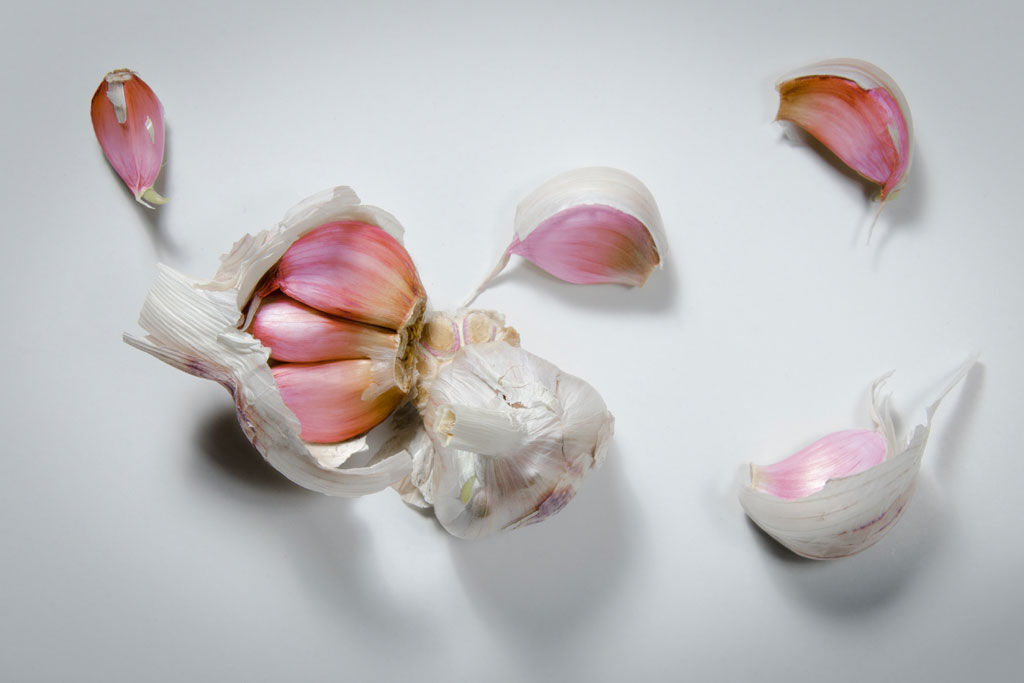How To Grow Fruit & Vegetables Indoors
By
5 years ago
A guide to windowsill gardens

Keen to grow your own, but don’t have a garden? Fear not: it’s possible to grow fruit and vegetables indoors. Here we share a few tips for ensuring your homegrown creations thrive. If you’re working on an outdoor patch, click here for top tips from former RHS Chelsea Flower Show gold-medallist Jo Thompson.
How To Grow Fruit & Vegetables Indoors
Light & Temperature
It’s important to find a spot that gets plenty of sunlight, as plants need light to photosynthesise – a windowsill is usually a safe bet. Edibles require more light than your average houseplant, so during the winter months, it’s worth investing in a grow light. It’s also important to look at individual light requirements: fruiting plants like tomatoes, peppers and citrus will need the highest levels of light, while leafy greens (spinach, lettuce, watercress) can bloom in lower light environments. Mushrooms, meanwhile, grow best in dark spaces.
Bonnie Plants also advises avoiding cold, drafty spaces (most vegetables need warm environments to grow) as well as heat vents and fireplaces.
Container
Opt for ceramic, wooden, metal or plastic containers rather than clay pots, as these tend to dry out. Containers with drainage holes are recommended, and pots should be large enough to host adult plants as well as seedlings – though some vegetables need less space than others. Herbs and salad greens will need less space, for instance, while cherry tomatoes will need more. As a general rule, the RHS recommends aiming for containers with a depth and width of at least 45cm.

Getty Images
Care
In terms of compost, the RHS suggests using sterile proprietary potting composts to obtain best results, such as John Innes, though peat-free varieties can also be suitable. Indoor gardens need regular watering – irregular watering can cause vegetables to have a bitter taste, so be sure to check on them every day. It’s useful to apply a feed of general-purpose liquid fertilised every two weeks too.
What to grow
When deciding what to grow in your indoor garden, look for words like mini, baby and patio in the plant names. These are small vegetable varieties which grow well in small spaces. Of course, you’ll also need to find out what grows best when – check out the RHS website for guidance.
Fun fact: you can actually grow brand-new vegetables from bits of leftover ones. Here Oddbox founder Emilie Vanpoperinghe shares tips on how.

Unsplash
Living lettuce
2 – 3 weeks
- Place the stem in water making sure it covers no more than two thirds and leave in a spot with plenty of light.
- Fill up and change the water when it needs (typically if it gets a bit cloudy).
- If you have the space then transfer the little shrub to soil, which will allow for better growth, but if a window-sill and empty jar is all you’ve got, this’ll do just fine.
- Ensure you cut from the outer leaves and leave a small inner core. Then just keep eating and regrowing in this beautiful circle of life for as long as your lettuce allows you.
Spring onions
1 – 2 weeks
- Leave about an inch from the roots, and pop them in a shallow glass of water so that the tops aren’t submerged.
- Change the water every few days and watch the green shoots continue to grow.
- Cut what you need from the tops, and the spring onions will grow for as long as you take care of them!
From onion ends
2 – 4 weeks
- Leaving about a half-inch up from the roots of the onion attached, place it directly in a small pot of soil and cover it with a layer of soil, keeping it in a sunny spot.
- Water it everyday to keep the soil nice and moist, and you’ll begin to see the spring onion shoots come up in a few weeks.
Coriander, basil and other cut herbs
2 – 3 weeks
- Ensure that there’s around 2 to 3 inches left of the stem of your herbs, and place them upright in a tall glass of water. The new roots should start to sprout after the first week, after which you can transfer them into a small pot of soil for your windowsill, making sure not to over water it.
- Once the herbs have begun flourishing, make sure never to pick out more than a third of the plant.
Celery
1 – 3 weeks
- Leave around 1 – 2 inches from the base of celery, and place down in a small bowl/glass of water in a sunny spot.
- After the first few days, you’ll see new leaves begin growing from the middle, and roots begin to grow.
- Transfer the celery shrub to a small pot of soil, making sure to keep it in as much direct sunlight as possible each day, watering it generously for it to grow its stalks to full length.
Leeks
1 – 2 weeks
- Leeks regrow much like celery and spring onions, the only difference is the sheer size of the leeks!
- Leaving 1 – 2 inches of the leek’s root ends, soak them root-first in a shallow glass/container of lukewarm water.
- Place them on a sunny windowsill, changing the water fairly frequently. You’ll begin to see the leeks regrow from the middle within the first week.

Unsplash
Garlic shoots
1 – 2 weeks
- Plant your garlic cloves with their roots facing down in a small pot of potting soil. Sit in a spot with lots of direct sunlight, and you’ll begin to see the beginnings of the new shoot in a few days.
- Alternatively, pop garlic that has sprouted slightly into a shot glass of water. These tops will continue growing and can be eaten just like spring onions.
Sustainable Gardening Guide / UK Seasonal Food Calendar / Gardening



